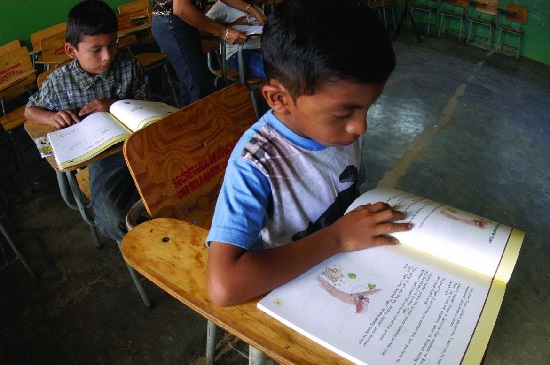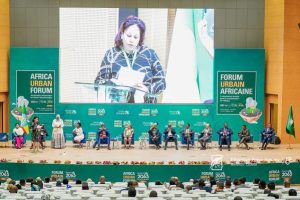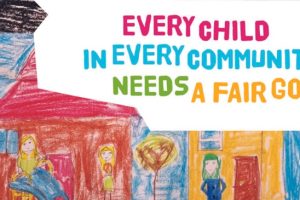
Under the influence and pressure of donors, higher education in Ethiopia had suffered from a series of institutional and systemic changes. By analyzing selected policy documents T. Molla has identified key neoliberal policy elements endorsed in higher education policy reform that affected social equity. His analysis showed that the former higher education (HE) policy reforms in Ethiopia, primarily framed by concerns of economic efficiency, had “constrained” social equity in two important ways.
First, at a broad level, the problem of disparity was represented as a “lack” of access and a disadvantage in the human capital formation of the country at large.
Second, the drive for greater efficiency and reduced costs in the educational provision embedded in the reforms was “inconsistent” with the need for financial and political commitments. These commitments were required to benefit marginalized groups in the society through relevant equity instruments. If the equity policy provisions should be influential in ensuring participation, retention and successful completion and thereby supporting the social mobility of disadvantaged groups, they needed to draw on a “social justice” perspective.
As T. Molla put it, countries seeking a competitive advantage in a burgeoning global knowledge economy had increasingly looked for human capital. They had produced quality and efficient HE systems to give them global advantage. In the case of Africa, this optimism had been expressed in terms of the importance of HE. It was a necessary requirement in the knowledge-driven poverty reduction program endorsed by the WB. The Bank had stressed the critical role that HE could play in supporting “knowledge-intensive” development in Ethiopia. But, in practice the TPLF had impeded the contribution of HE to the country through discriminatory approaches.
The junta had obstructed the process of training, knowledge, and capacity building in the country. This measure had hindered access to global knowledge for the “disfavored” regional states in Ethiopia. However, the WB approach to poverty reduction using knowledge had renewed interest in revitalizing HE in Africa, including Ethiopia. Many countries in the continent had taken the Bank’s lead, reforming their HE policies emphasizing knowledge-driven economic growth to end poverty. With the Bank’s critical role in initiating reforms and providing support including policy advice and funding necessary to these reforms, the current government has introduced reforms in HE aimed at producing a qualified workforce for both productivity and equity.
Qualified workforce required for the implementation of the development plan is now at the center of the country’s poverty reduction program. This ensures the responsiveness of HE to the need of the economy. At government level, it has introduced a new HE proclamation that sets the legal framework for the reform process, and has extensively expanded higher education. However, inequality in access to and success in HE remained a critical challenge. And yet the problem has not been clearly identified and investigated in relation to the major policy changes for the expansion of HE. Also, HE reform should be preceded by educational reforms at all levels, including kindergartens and schools.
Studies indicated the problem of inequality in the Ethiopian HE in relation to the neoliberal reform agenda that had been endorsed by the TPLF junta. Experts argued that given the pervasive and largely external neoliberal educational agenda of the past, it was imperative to question the “equity” implications and consequences of the reforms. Drawing on critical policy analysis approach, studies sought to understand the way the problem of inequality in HE has been framed. It was pointed out how the role of the government had been constrained in addressing structural inequalities in HE. In this regard, the TPLF government had endorsed neoliberal policy agenda in the HE reform, which had implications for social inequity.
The “social justice” perspective was an important input in devising equitable policy instruments. Neoliberalism, however, assumed its “hegemonic” position through the process and forces of globalization. Its economic ideals were embedded in the policy of international financial institutions. These were infused into public policy agendas of developing countries, including Ethiopia, in the form of liberalization, privatization, decentralization, and social spending reduction. In this regard, neoliberal agenda were external to Africa as they were imposed by donors and lenders. Initially it was imposed with loans, and later on with debt reduction, based on accepting Structural Adjustment Programs (SAP) or implementing of a Poverty Reduction Strategies (PRS). The TPLF junta had readily accepted both the program and strategy just to win the favors of IMF and the WB and exploit their resources to its own end.
In line with the poverty alleviation strategy, the WB particularly called for restructuring the HE in Africa/Ethiopia. The WB induced educational reform agenda underpinned by its neoliberal assumptions about the “limited” role of the government in view of the increased importance of the market forces. As a result, the national education policies and practices in aid recipient countries have unavoidably been shaped by what Roger Dale calls a “globally” structured educational agenda. As one of the most important actors of the global education policy, the WB was a prominent agent for the neo-liberalization of education.
Neoliberal policy elements referred to specific policy prescriptions of the WB that constituted the broad reform agenda or direction. While a commitment to reduce public spending in HE could be considered a neoliberal “reform” agenda, the cost-sharing scheme was a neoliberal “policy” element in support of that agenda. T. Molla has summarized this neoliberal HE reform agenda of the WB in three key categories: introduction of market mechanisms, strong alignment with economic productivity, and decentralized governance. These three agenda and their elements are explained generally and in relation to Ethiopia specifically as follows.
In introducing market forces into the HE system of aid-dependent governments, the WB presented three key policy elements. These were private provision, cost-sharing and income diversification. First, privatization was at the center of what the WB called “sound economic policy.” In this policy the private sector was “preferable” to the public sector to achieve the most desired public policy goal of efficiency. Second, cost-sharing or user fee was another dimension of the market forces in HE. It was part of the plan to reduce public spending on HE and maximize resource utilization. It was assumed that higher rates of taxation to support students out of public funds “impair” economic efficiency. Hence, the alternative was to let individual students pay directly for a service they receive.
Income diversification or generating was another option for public universities. HE institutions were expected to widen their source of income through establishing linkage. They worked with the industry and service sectors in the society in the form of consultancy and research, and producing capital goods such as technology and agricultural products. In line with WB policy recommendation, the government opened up the HE subsystem for privatization. In a short period of time, the number of accredited private HE institutions, with undergraduate and above programs grew from none to 44, enrolling about 18 percent of the total student body. The cost-sharing scheme was another market element introduced to the HE of Ethiopia, which had been happily accepted by the TPLF junta, as its supporters had been rich enough to own private HE institutions or pay tuitions.
Following the recommendation of the WB, the government had finally introduced user fee in public HE institutions. The HE proclamation declared that any Ethiopian student studying in a public institution and who was not required to pay in advance tuition fee should contribute to cover the cost of his education in accordance with the regulations of the government. In the new user-fee scheme, students in public universities entered an obligation to share the cost of their study, to be paid back in the form of service or graduate tax from “future” earnings. The cost-sharing scheme has partly been justified on equity grounds. It ensures that the primary beneficiaries pay for their education so that the public fund can be used to widen access.
The cost-sharing scheme supported the participation of disadvantaged groups of the society in education. Nevertheless, with the deliberate TPLF practice of deteriorating the quality of education and the weak economic environment of the country, “unemployment” of graduates had become a serious concern, and recovering costs of education appeared to be unrealistic. “Diversification” of the sources of revenue for public universities was thought to be a solution to the ever declining public funding. The government, therefore, has demanded public universities to gradually move away from public funding through mobilizing resources for themselves in various ways. They might engage in marketing their research and advisory services and establishing profit making enterprises.
The instrument of funding HE has changed drastically. In accordance with the recommendation of the WB, the HE Proclamation provides that every public institution shall receive a block grant-budget, agreed upon in advance as indicative budget for a given period, which is revised annually. The cost of “insufficient” public investment is unbearable. Thus, the irresponsible decision of the TPLF to leave HE under the full control of the market forces was simply untimely and undesirable.
BY GETACHEW MINAS
THE ETHIOPIAN HERALD NOVEMBER 7/2021





